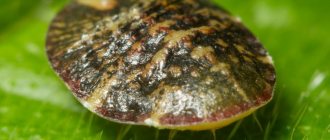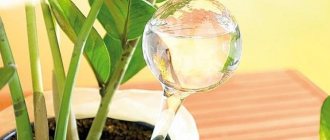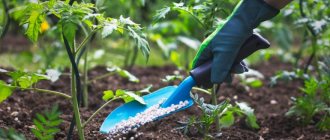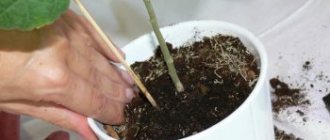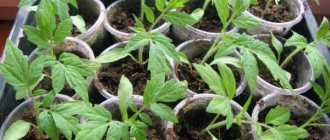How to get rid of rust on plants
Good afternoon, dear readers!
When growing vegetables and fruits, as well as flowers, in garden beds, we often encounter plant diseases. One of the most common and painful problems for summer residents is plant rust. Rust can affect not only agricultural plants, but also decorative ones. Some of the crops most susceptible to rust are conifers and legumes. Flowers such as roses, gladioli, chrysanthemums, marigolds, azaleas and many others are also susceptible to this disease. The cause of this scourge is microscopic parasitic fungi. They spread thanks to moist warm air and water droplets on plants. We note that plants grown outdoors are less susceptible to disease. House plants suffer from this infection much less. As you can see, rust appears on plants quite often. And proper treatment will help eliminate this problem. And this is exactly what we’ll talk about in today’s publication.
How to recognize rust on plants
If you don’t know how to recognize rust on plants, then in this part of the article we will answer this question in detail. Plants usually develop stripes of yellow or brown color. Most often this phenomenon occurs in wet weather. These pimples on the leaves burst and a rusty mixture comes out, which is a fungus or infection. These fungi can be found not only on the surface of plants, but also penetrate inside, which makes the process of healing plants more labor-intensive and lengthy. Rust mainly appears inside the petal of the plant, but can also be observed on the trunk and on the upper surface of the leaf. Infected leaves most often die and fall over time, and the shoot trunk takes on the appearance of a “wounded fighter” with deep lesions.
How to properly deal with and prevent rust
If rust appears on your plants, then you should know how to deal with this phenomenon. And if you don’t know how to do this, then our article will definitely answer this question. In order to prevent your plants from rusting, you must follow the rules of growing plants. Basically, you need to monitor regular watering and air temperature. When spring comes, you should carefully inspect the trunks of the plants to ensure there is no damage. If you find wounds on the shoots, it is better to remove them, and clean the tree trunk to healthy wood and treat it with a fungicide. This work will help avoid infections in the summer.
If you find rust on the leaves, it is better to cut off the damaged shoots and completely treat the plants with protective agents.
As for ornamental (indoor) plants, it is better to do the treatment outdoors. For treating plants against rust, a copper-soap solution works best. For 1 liter of water you need to add 20 grams. soap and 2 gr. copper sulfate. Pour this mixture into a spray bottle and spray the plants. To spray plants against rust, you can purchase ready-made products such as copper oxychloride, Bordeaux mixture, Cuprozan and Topaz. When treating plants, make sure that the solution gets on the back side of the foliage. The initial stage of plant disinfection must be carried out before flowering, and the second - after flowering. After a couple of weeks, the procedure must be repeated.
Finally
You probably understand that rust is a serious plant disease. Therefore, it is important to use all available means to combat this phenomenon. In any case, we wish you good luck in this matter.
Reasons for appearance
Rust is a fungal disease, and the fungus, as you know, likes to settle in places where it is humid, warm and dark. From this we can conclude that rust appears on plants if they are watered too often and abundantly, not ventilated and kept in the shade, away from direct sunlight or phytolamps.
It is especially dangerous to flood indoor plants with water in winter. Many flowers in the cold season go into a dormant state until spring; they do not need frequent watering, nor do they need mineral fertilizing. If, in addition to this, the pot is located near the radiator, you should not be surprised at the appearance of such a plant disease.
Over-watering indoor plants can lead to rust infection.
Also, the development of fungus can be provoked by the abuse of mineral fertilizers rich in nitrogen. In winter they are not needed at all. And during the growing season and flowering of plants, you should strictly follow the instructions and do not apply too high a concentration of fertilizer.
If pots with plants are placed on an open terrace, veranda or balcony, then fungal spores can be carried by the wind or insects. Sometimes you come across seeds that are already infected with rust. Recognizing this is difficult, often completely impossible. This is one of the reasons why seeds should be treated with potassium permanganate before sowing. As well as the containers with soil in which they will be planted.
How dangerous is the disease?
Yellow pollen, that is, a fungal spore (of the genus Phragmidium or Puccinia), causes the death of the leaves of indoor plants, and in particularly “neglected” cases, other parts. With a lack of sunlight, heat and fresh air, the plant’s “immunity” and ability to survive in the winter may decrease.
Indoor plants with “rust” on the leaves are diagnosed with impaired metabolism, the process of photosynthesis, and moisture absorption. In such plants there is a sharp decrease in the formation of shoots or the absence of them at all. If the disease on the leaves is not treated, it will quickly spread to all organs and the indoor flower will die.
Signs of rust in cereals and vegetables
Most often, rust affects fruit crops, however, the phytopathogen can also “settle” on some cereal plants. In private farms, susceptible species are most often grown to include corn, and less commonly, other members of the family. Light yellow spots appear on the leaves and stems of affected plants, on which stripes-pustules subsequently form. Subsequently, they darken, may rupture, and the parts of the plant themselves dry out.
In more rare cases, rust can also affect vegetable crops, such as peas. The pattern of damage is similar to that of cereal crops.
How to diagnose rust?
It is quite easy to determine that rust has “settled” on the leaves. The first and most basic sign that the disease manifests is a red, oval-shaped pad. After several days, the number of pustules increases sharply, filling all the free space on the leaves.
In order for the fight against rust to begin in a timely manner, you need to know the possible locations of the pustules:
- leaf;
- stem;
- box with seeds;
- calyx of inflorescence.
Red spots and stripes are most often attached to the underside of leaf blades; much less often they can be identified on the stem and petiole. If the disease appears on the upper side of the leaf, the pustule may have a light yellow color.
The superficial location of the fungus provokes excessive evaporation of moisture, premature drying and death of the leaf.
Signs of rust in fruit crops
Fruit plants are intermediate hosts of rust fungus. Pear, apple and plum trees are especially susceptible to the disease. Less commonly, rust affects berry crops - currants, raspberries, strawberries, etc.
What does the disease look like? Brown-red or red-orange swellings appear on the leaves in the form of pads. The spores of the phytopathogen quickly spread throughout the plant, as a result of which the crop sheds its leaves ahead of schedule and bears fruit poorly. The fungus can be carried by wind up to 50 km.
Climatic conditions also play an important role in increasing the “survivability” of the fungus. Warm, humid weather in autumn and the absence of frost in winter mean that the pathogen does not receive a serious temperature shock (does not freeze out) and therefore suffers virtually no losses.
Methods to combat plant rust
Treatment for rust should begin as early as possible. At different stages of disease development, methods against rust differ. If you start fighting the disease right away, it will be enough to cut off the infected leaves and destroy them.
At later stages, when the pustules have had time to multiply, experts recommend using special anti-rust preparations to combat living fungal spores in all infected areas of the plant.
It is important to know! Treatment of indoor plants is carried out only with special protective gloves that prevent the penetration of the drug onto the skin.
The most effective drugs in the fight against the disease:
- 1% Bordeaux mixture (a mixture of copper sulfate and lime powder).
- Topaz.
- Abiga Peak.
- Baktofit.
- Fitosporin-S.
It should be noted that a one-time treatment of the plant may not be enough to completely cure the disease. Young (resistant) pustules with spores are able to survive after treatment. Therefore, experts recommend re-processing the plant after 7-14 days.
Also, do not forget that you can completely get rid of the disease only if the cause and method of infection are identified in a timely manner. Experts say that most often indoor plants get rust from coniferous trees. It is not for nothing that most disease epidemics began precisely after the New Year holidays.
Most conifers are intermediate hosts. They are resistant to the disease, since the affected needles on coniferous trees fall off and do not require special spore control.
Subtleties of spraying infected plants
- When fighting fungal spores, experts do not recommend additionally irrigating the plant, since the effectiveness of treatment decreases, and water contributes to a greater spread of the disease.
- To prevent the chemical solution from getting on neighboring “healthy” plants, spraying should be carried out in an isolated space. Upon successful completion of each spraying, you need to rinse all components with water to prevent the chemical from getting on people or animals.
- Store chemicals only in a cool, dark place out of reach of children.
Which indoor plants suffer more often than others?
In principle, rust can appear on any type of indoor plant. But the fungus loves certain varieties more than others. In addition, there are house flowers that are more sensitive to fungal spores and are unable to fight it. The following ornamental crops should be protected from moisture and overheating with special care:
- camellia;
- fuchsia;
- carnation;
- cyclamen;
- pelargonium;
- rose;
- geranium;
- chrysanthemum.
A cameo leaf damaged by rust cannot be treated.
This fungus likes to settle on garden crops such as asparagus and citrus bushes, and often affects palm trees of various types.
How to properly organize prevention
An effective means of combating rust is the organization of periodic prevention of the disease. To reduce the risk of contracting the disease, you should:
- Strictly follow the recommended calendar for introducing nitrogen fertilizer into the root and foliage systems.
- Plant plants in a timely manner.
- Water indoor plants on a schedule.
- Eliminate plant residues from flowerpots.
- Minimize contact between house plants and coniferous trees.
By using special anti-rust preparations in a timely manner, you can save more than one indoor flower, but also protect your “green corner” from total destruction.


